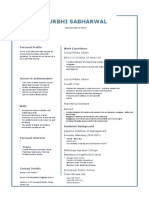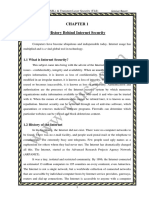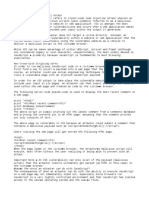0% found this document useful (0 votes)
58 views4 pagesRoadmap
The document outlines a comprehensive 12-month training program focused on cybersecurity skills, starting with foundational knowledge in networking, Linux, and Python scripting. It progresses through mastering tools and techniques, hands-on labs, and culminates in advanced skills and certification preparation. Each month is broken down into weekly goals, resources, and practical exercises to reinforce learning and application of cybersecurity concepts.
Uploaded by
slaksh15200Copyright
© © All Rights Reserved
We take content rights seriously. If you suspect this is your content, claim it here.
Available Formats
Download as DOCX, PDF, TXT or read online on Scribd
0% found this document useful (0 votes)
58 views4 pagesRoadmap
The document outlines a comprehensive 12-month training program focused on cybersecurity skills, starting with foundational knowledge in networking, Linux, and Python scripting. It progresses through mastering tools and techniques, hands-on labs, and culminates in advanced skills and certification preparation. Each month is broken down into weekly goals, resources, and practical exercises to reinforce learning and application of cybersecurity concepts.
Uploaded by
slaksh15200Copyright
© © All Rights Reserved
We take content rights seriously. If you suspect this is your content, claim it here.
Available Formats
Download as DOCX, PDF, TXT or read online on Scribd
/ 4






















































































